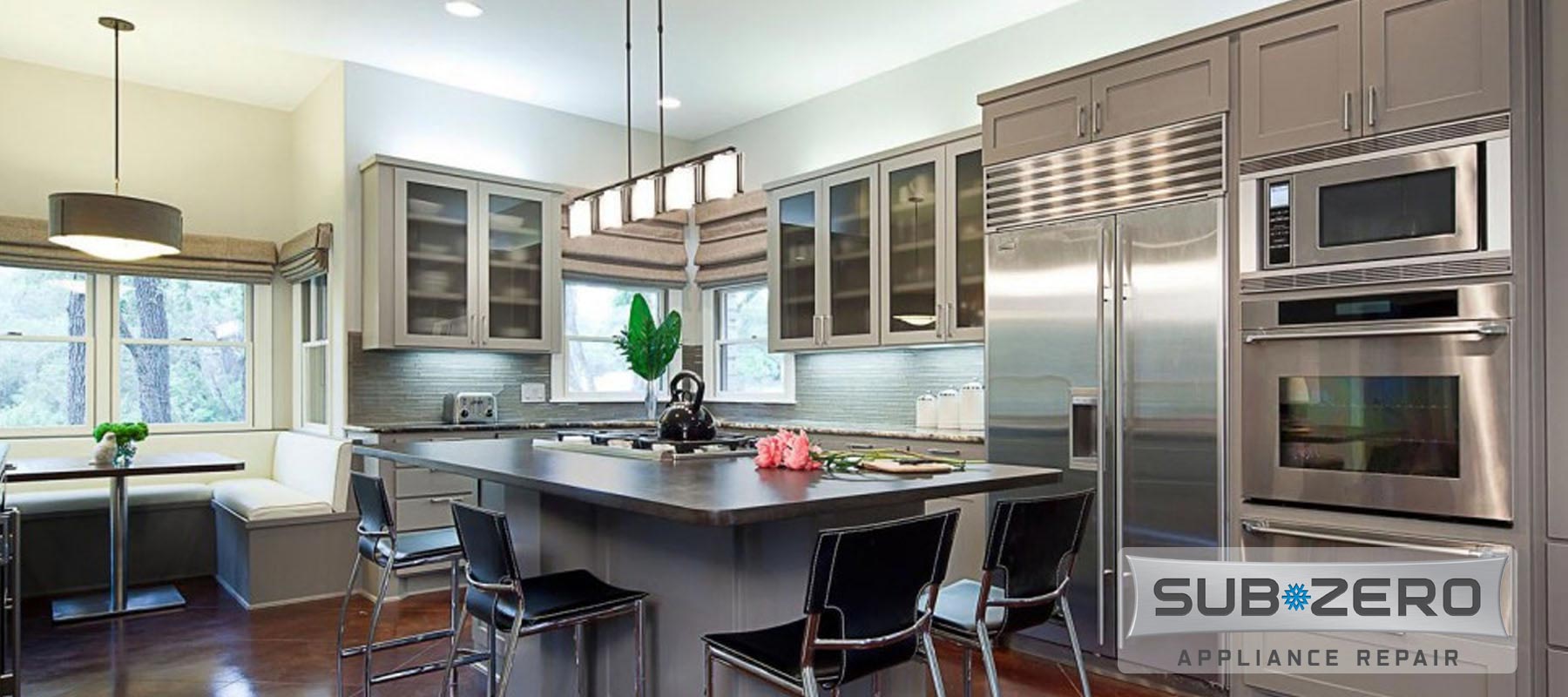Regarding premium refrigeration, Sub-Zero stands as a hallmark of quality and performance. However, even the finest appliances can develop issues over time. One common concern is your Sub-Zero refrigerator making noise. In this guide, we will delve into the various causes of these noises and provide detailed steps for diagnosing and resolving them.
Understanding the Different Types of Noises
Refrigerators are complex machines, and not all noises indicate a problem. Here’s a breakdown of the typical sounds your Sub-Zero refrigerator might make and what they usually mean:
- Humming: Generally, a low hum is normal and comes from the compressor or fans.
- Buzzing: This can be due to the ice maker filling with water.
- Rattling or Vibrating: It could be caused by items inside the refrigerator or the unit being unlevel.
- Squealing or Squeaking: Often, this noise is from the fan or compressor motor bearings.
- Clicking: Typically, this sound occurs when the defrost timer switches on and off or the compressor cycles.
Understanding these sounds can help you identify what’s normal and requires attention.
Common Causes of Noises in Sub-Zero Refrigerators
Compressor Noises
The compressor is the heart of your refrigerator’s cooling system. If the refrigerator is making loud noises, it could be due to:
- Age and Wear: Over time, compressors can become noisy as internal components wear out.
- Overheating: An overheated compressor can cause louder than usual humming or buzzing sounds.
- Mounting Issues: Loose or damaged mounts can lead to rattling or vibrating noises.
Solution:
If the compressor noise is persistent and loud, it may require professional Sub Zero refrigerator repair service or replacement. Ensure that the compressor and its mounts are inspected regularly.
Fan Motor Issues
Sub-Zero refrigerators have several fans, including the evaporator fan, condenser fan, and cooling fan. Noise from these fans can arise due to:
- Debris Build-up: Dust and dirt can accumulate on the fan blades.
- Worn Bearings: Bearings in the fan motor can wear out, causing squealing or grinding noises.
- Obstructions: Items inside the refrigerator or freezer might obstruct the fan blades.
Solution:
Clean the fan blades regularly and ensure there is no obstruction. If the fan motor is faulty, it may need replacement. This is often a task best handled by a professional.
Ice Maker and Water Valve Noises
Sub-Zero refrigerators with ice makers can produce distinct noises, such as:
- Filling Buzz: A buzzing sound when the ice maker is filling with water.
- Ice Ejection: A clicking or clunking noise as ice is ejected from the mold.
- Water Valve Issues: A malfunctioning water valve can cause continuous buzzing or clicking sounds.
Solution:
Inspect the water line and ensure it is properly connected. If the noise persists, the water valve or ice maker components may need replacement.
Defrost System Noises
The defrost system in Sub-Zero refrigerators can sometimes produce noises during its cycle:
- Defrost Heater: A hissing or sizzling sound when the heater is in operation.
- Expansion and Contraction: Cracking or popping sounds as the refrigerator parts expand and contract during the defrost cycle.
Solution:
It is normal when your Sub-Zero refrigerator is making noise. However, if they become excessively loud, it could indicate a problem with the defrost timer or heater which might need professional attention.
Vibration and Rattling
Vibration and rattling noises are commonly caused by:
- Unleveled Refrigerator: If the refrigerator is not level, it can vibrate or rattle.
- Loose Items: Objects inside or on top of the refrigerator can cause noise when they move.
Solution:
Ensure the refrigerator is perfectly level and stable. Remove any loose items from the top or sides of the refrigerator that might be causing vibrations.
Regular Maintenance Tips
Maintaining your Sub-Zero fridge in top condition can prevent many of these noise issues:
- Clean the Condenser Coils: Dusty coils can force the compressor to work harder, increasing noise.
- Level the Refrigerator: Check and adjust the leveling screws to ensure stability.
- Inspect the Door Seals: Ensure they are clean and tight to prevent the compressor from overworking.
- Routine Professional Service: Regular checks by a professional can preemptively address potential issues.
When to Call a Professional
Sub-Zero refrigerator making noises may be resolved with simple maintenance. However, there are times when professional help is necessary:
- Persistent and Loud Noises: If the noise continues despite your efforts to fix it.
- Electrical or Mechanical Failures: Such as a failing compressor or fan motor.
- Complex Repairs: Involving disassembly of the unit or handling refrigerants.
In these cases, it’s best to contact Sub-Zero customer service or a certified repair technician like us here at Sub Zero Certified Repair to avoid further damage or voiding your warranty.
Conclusion
Sub-Zero refrigerators making noises doesn’t necessarily mean a major problem. By identifying the type of noise and following our detailed troubleshooting steps, you can often resolve the issue yourself. Regular maintenance is key to keeping your appliance running smoothly and quietly. For persistent issues, seeking professional Sub Zero Refrigerator Repair in Green Acres or near you ensures your premium appliance remains in top-notch condition.
By following these “refrigerator making noise” guidelines, you can maintain the superior performance and silence that Sub-Zero fridges are known for. For more in-depth insights, check our “Sub-Zero fridge freezer not working” blog.
FAQs
What does it mean when your fridge or freezer is making a loud noise?
A loud fridge usually signals a problem with the compressor, fans, or loose parts. It might also be the ice maker operating normally.
How can I stop my refrigerator from making noise?
To stop the noise, clean the coils and fans, level the fridge, secure loose items, and check the ice maker. If the noise persists, call a technician.
Why does my Sub-Zero ice maker make noise when I run?
The noise from a Sub-Zero ice maker is due to water filling, ice ejecting, fan operations, or vibrations from the water line.
